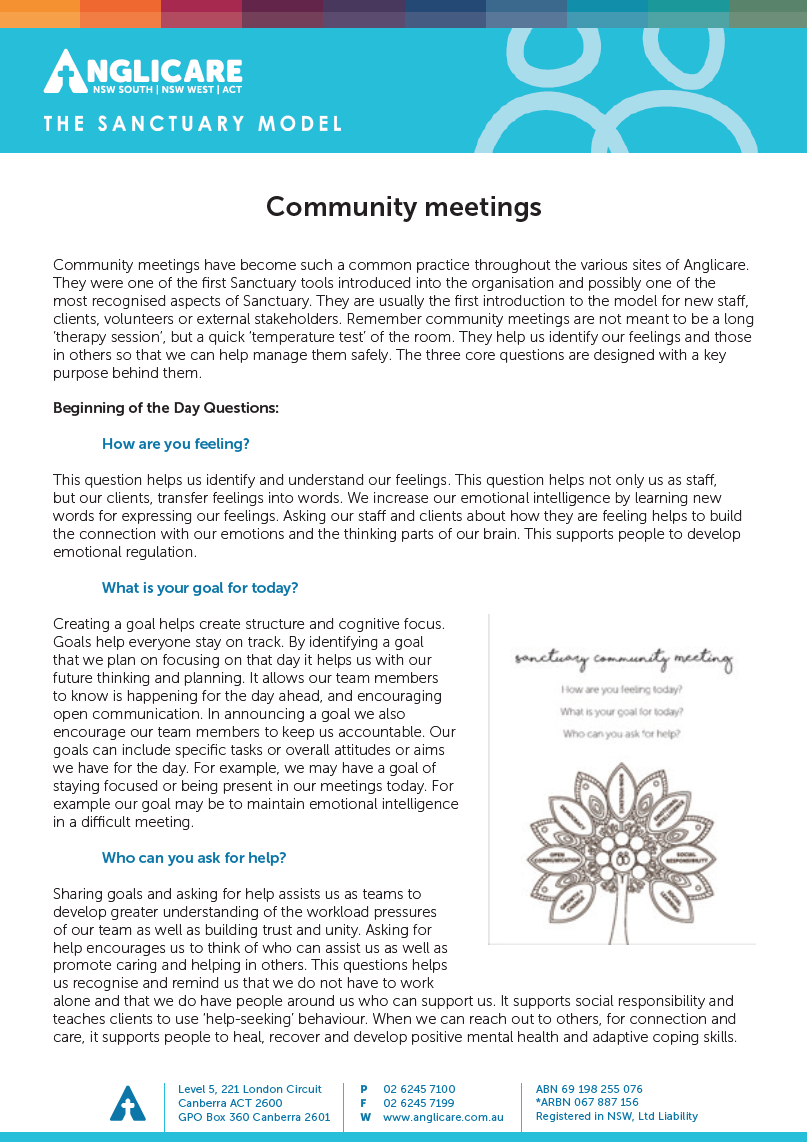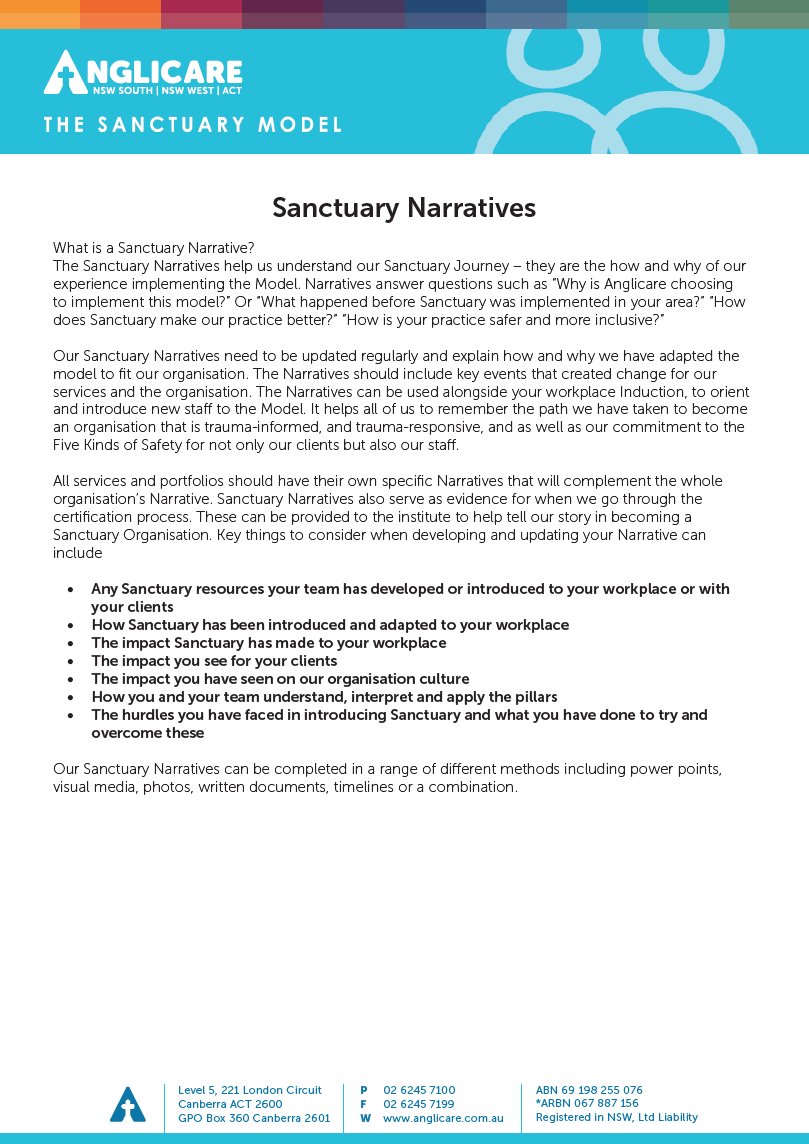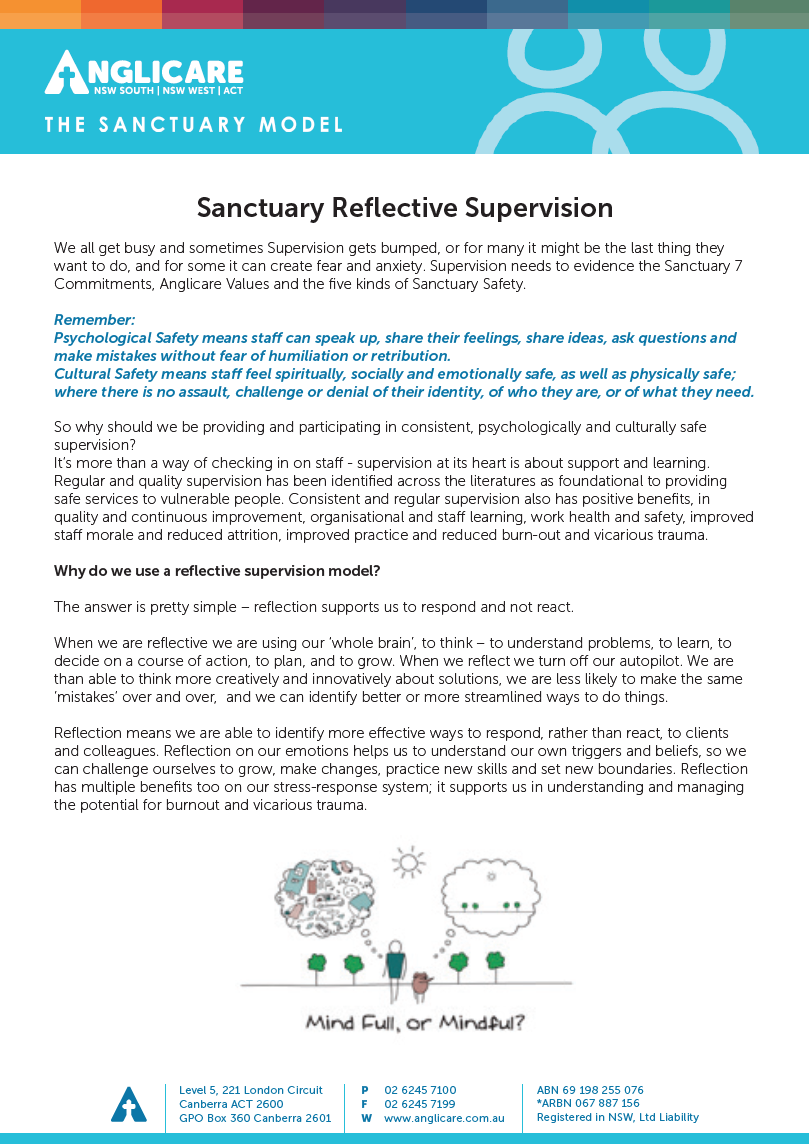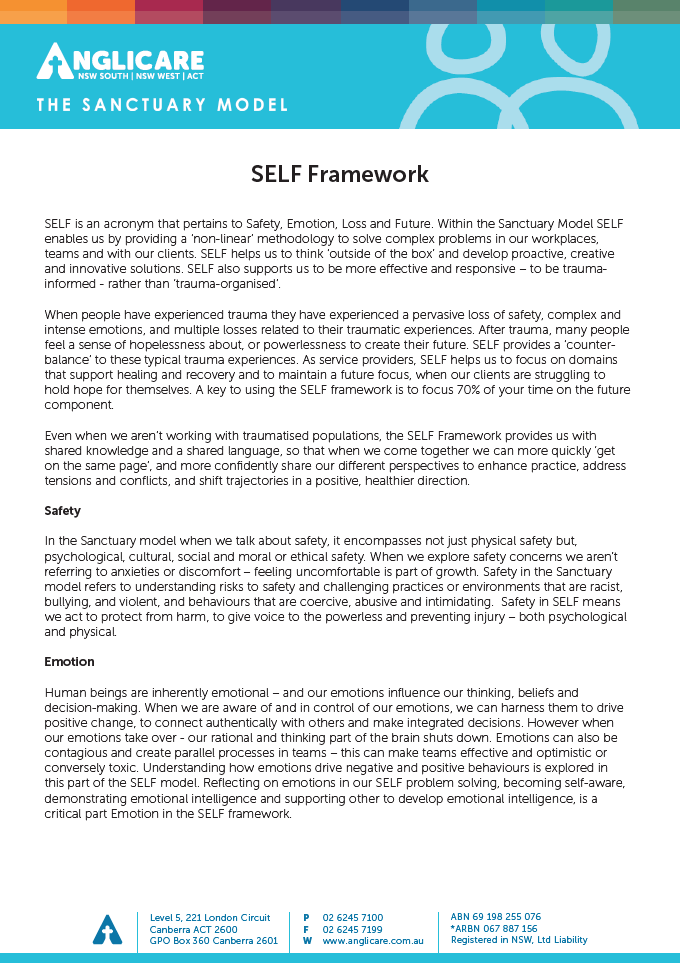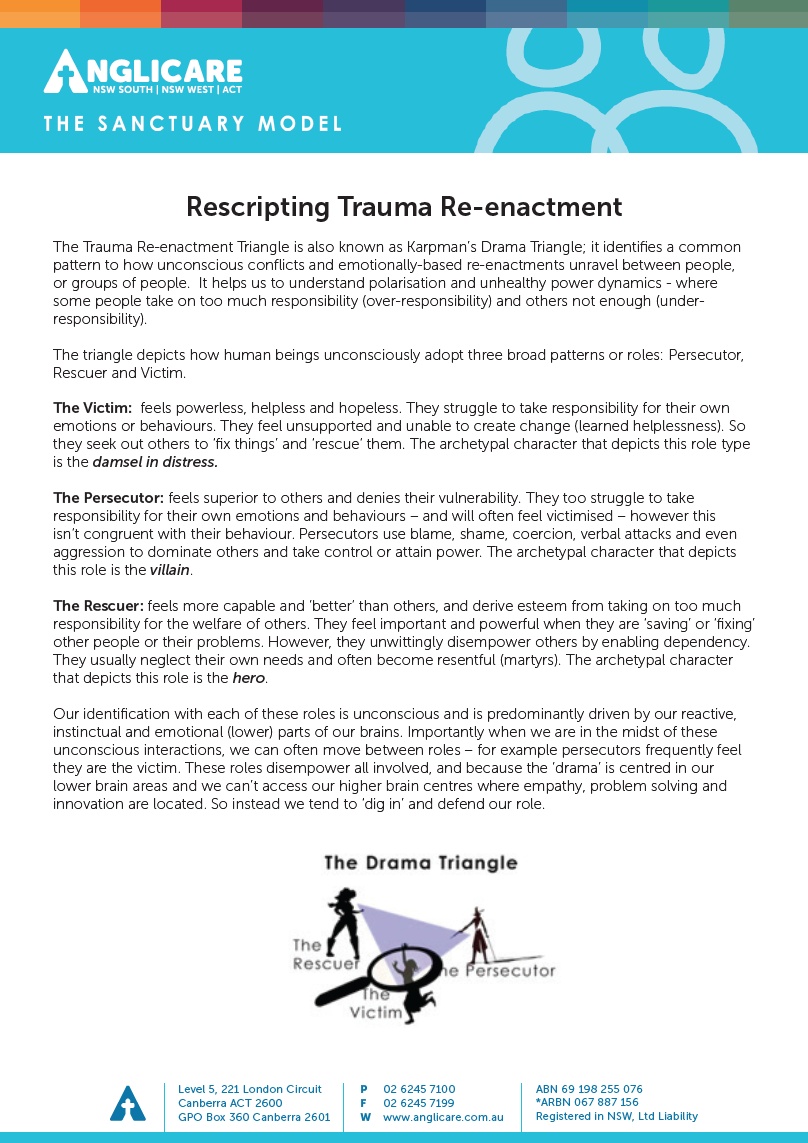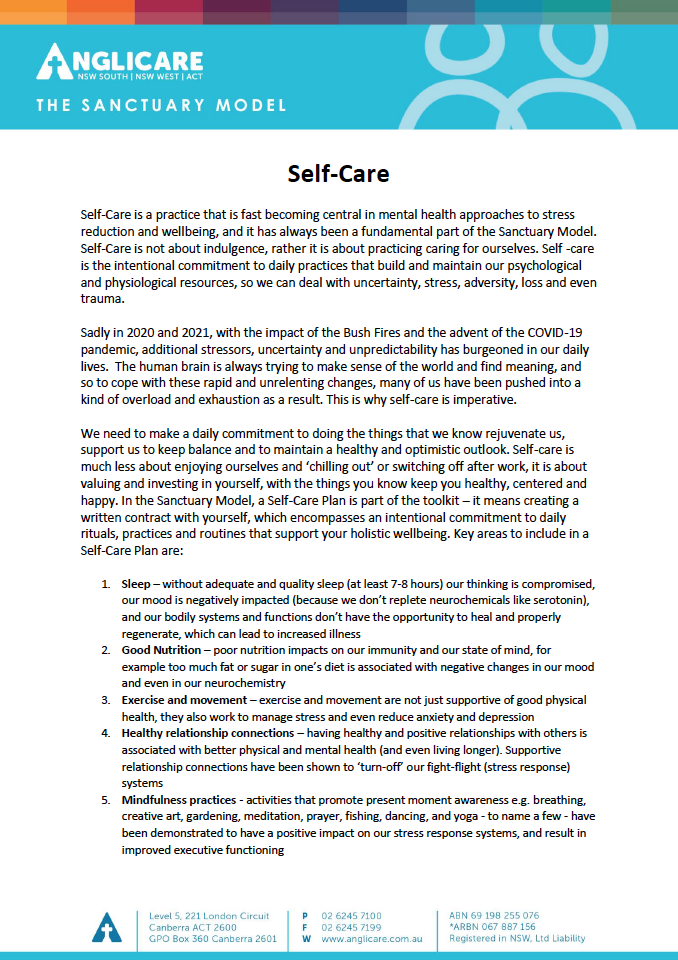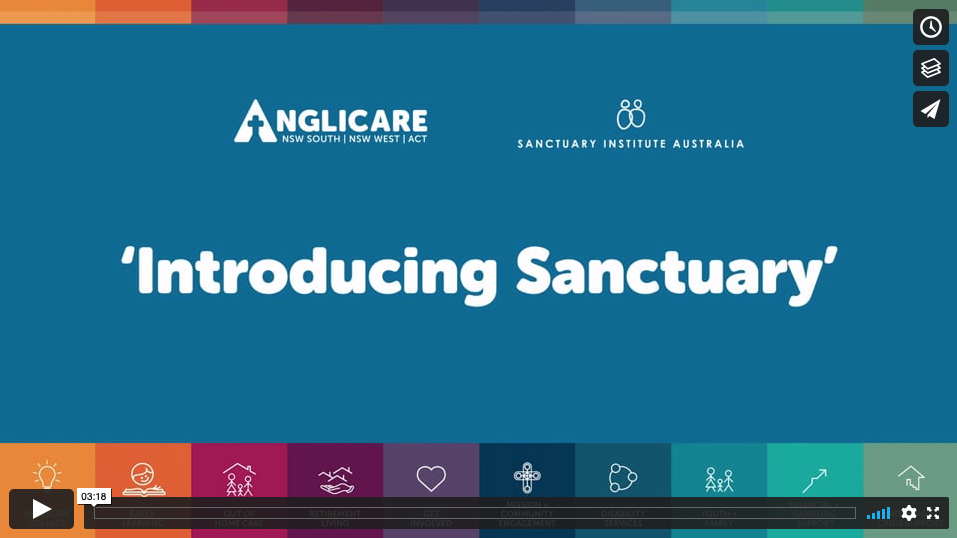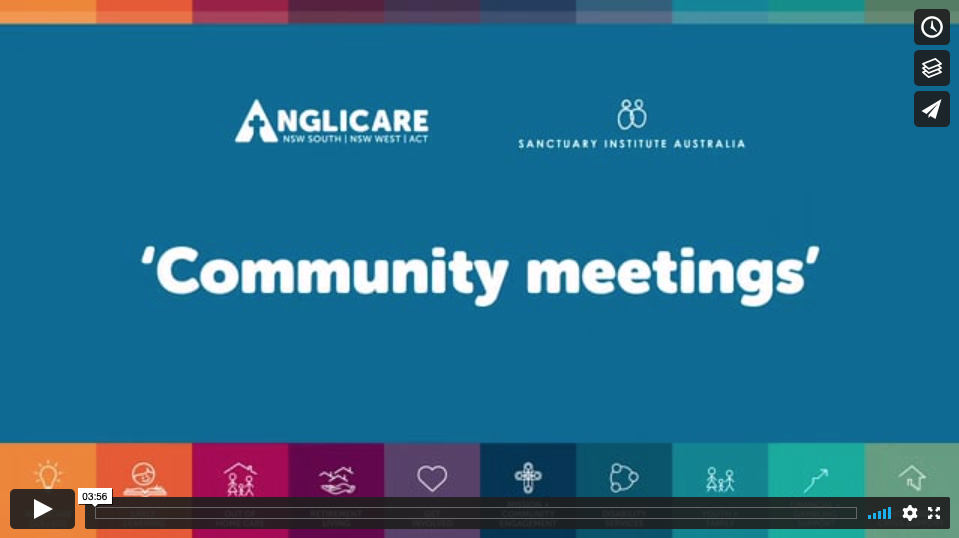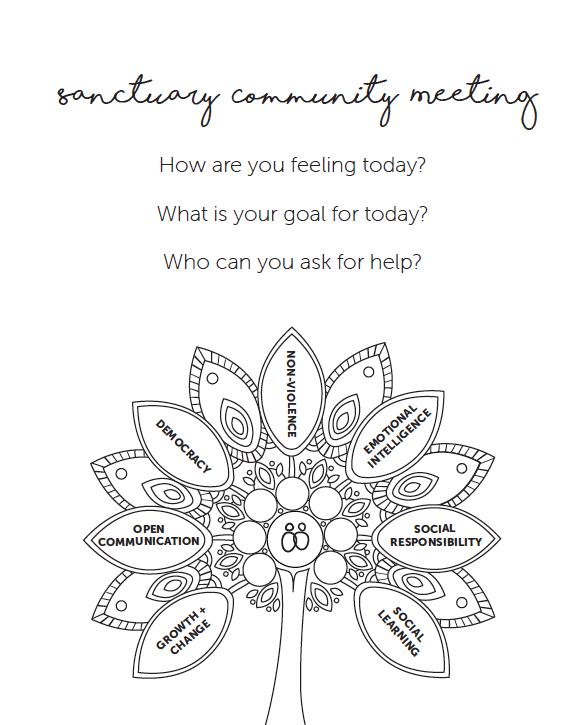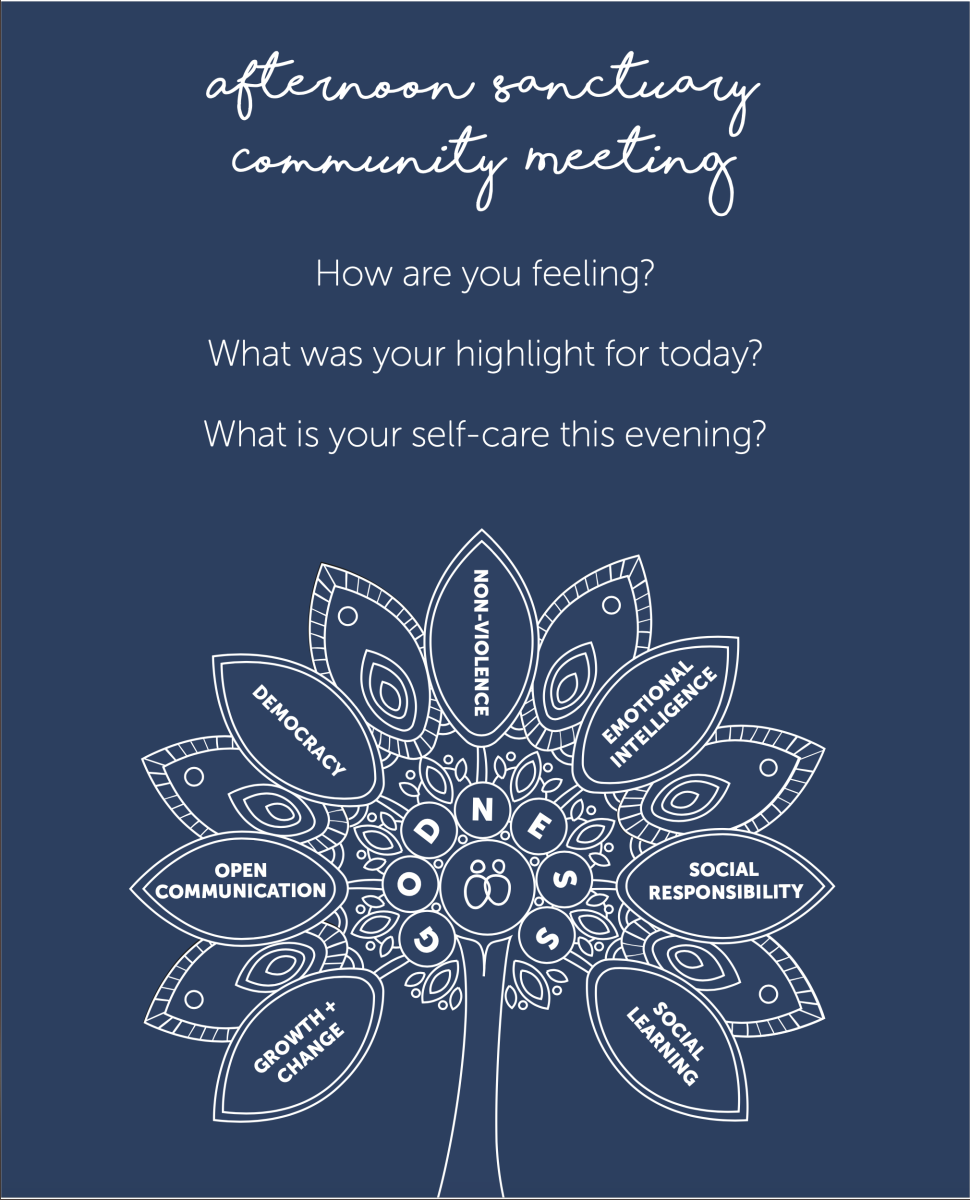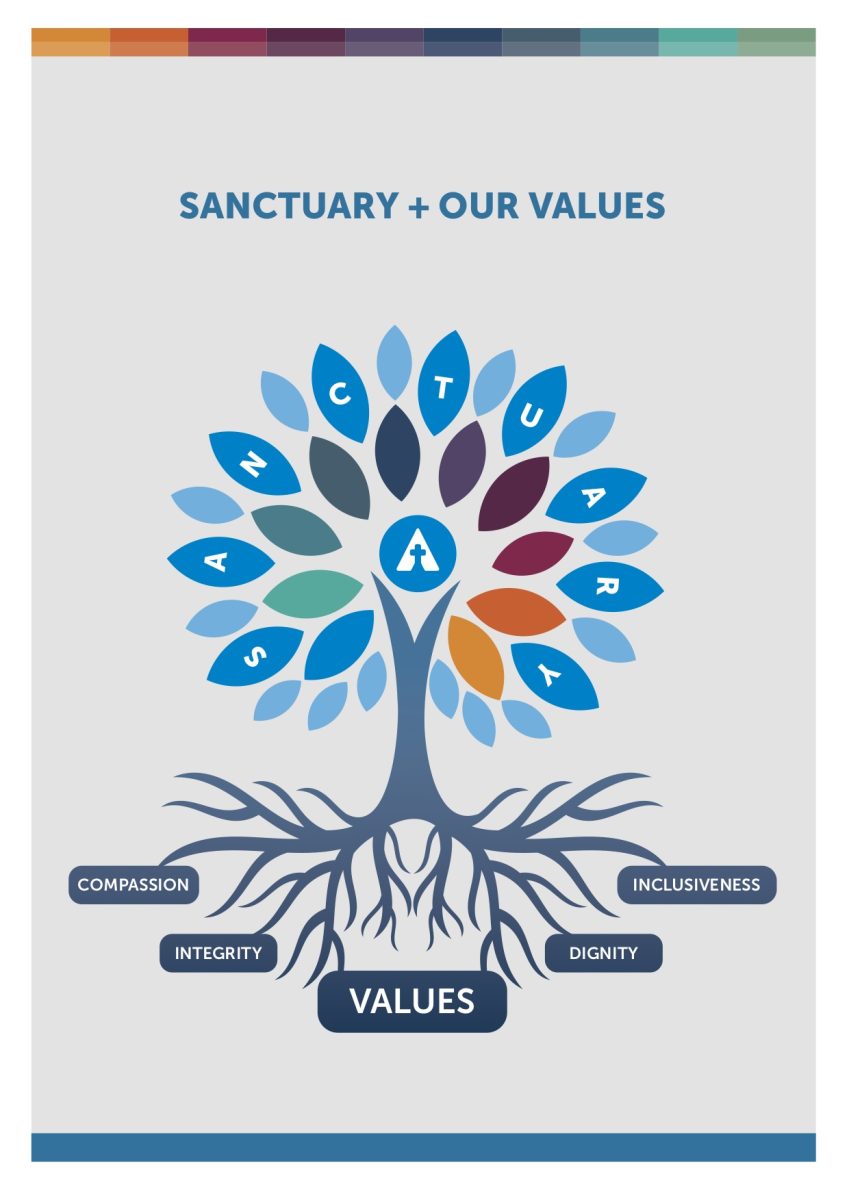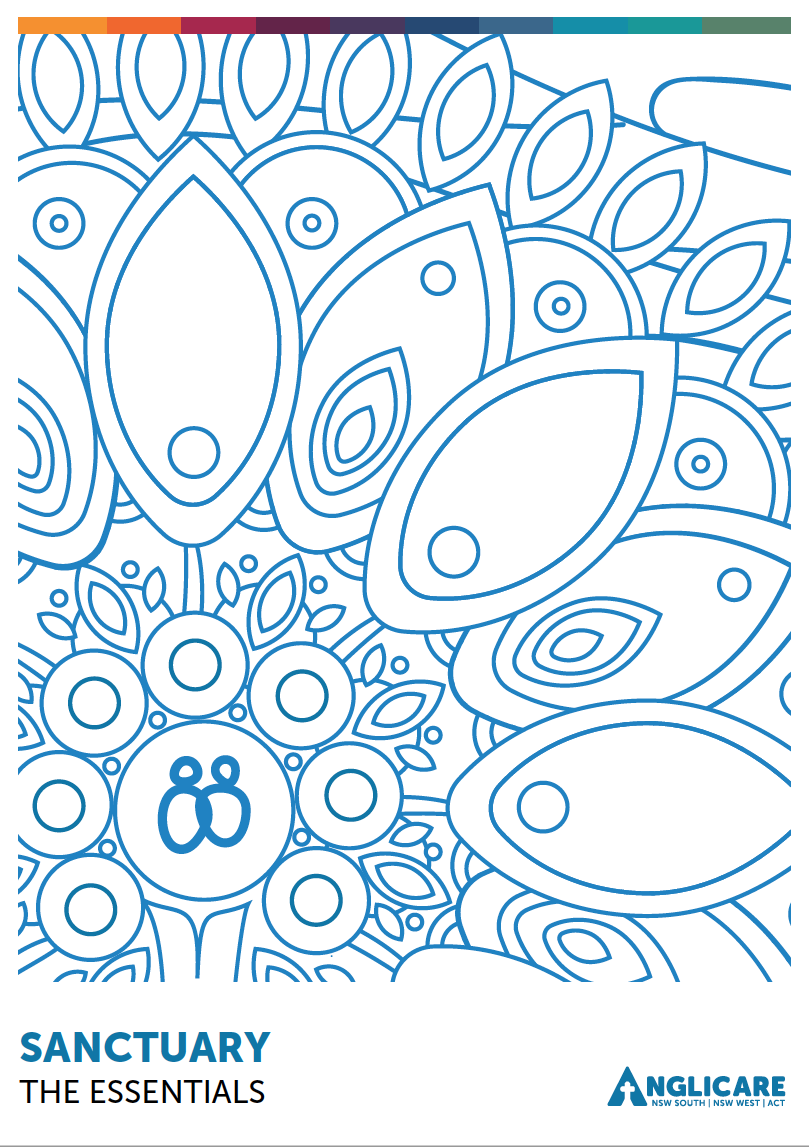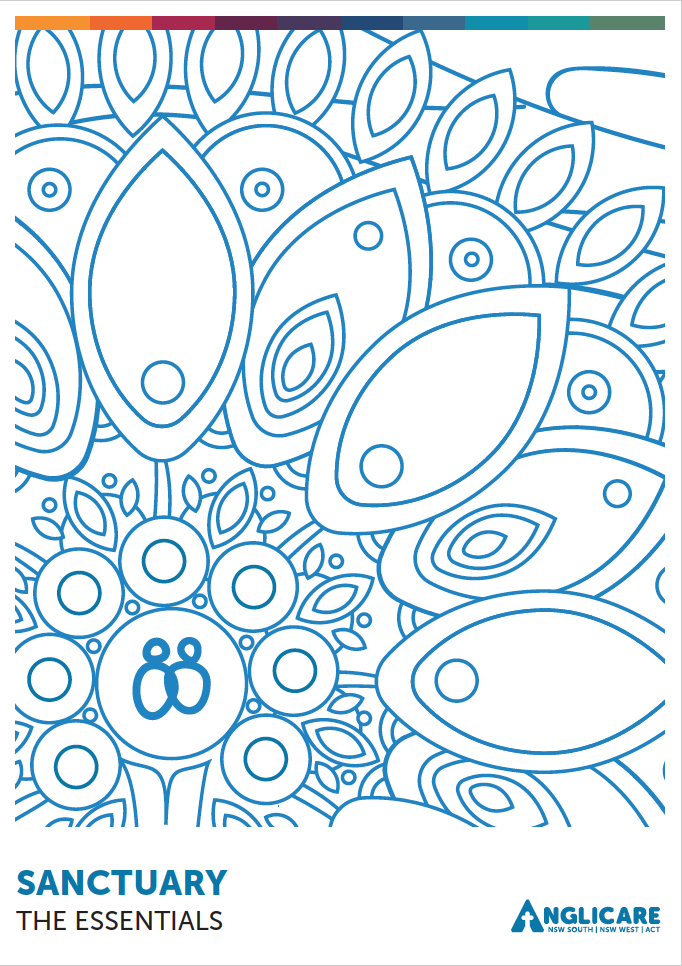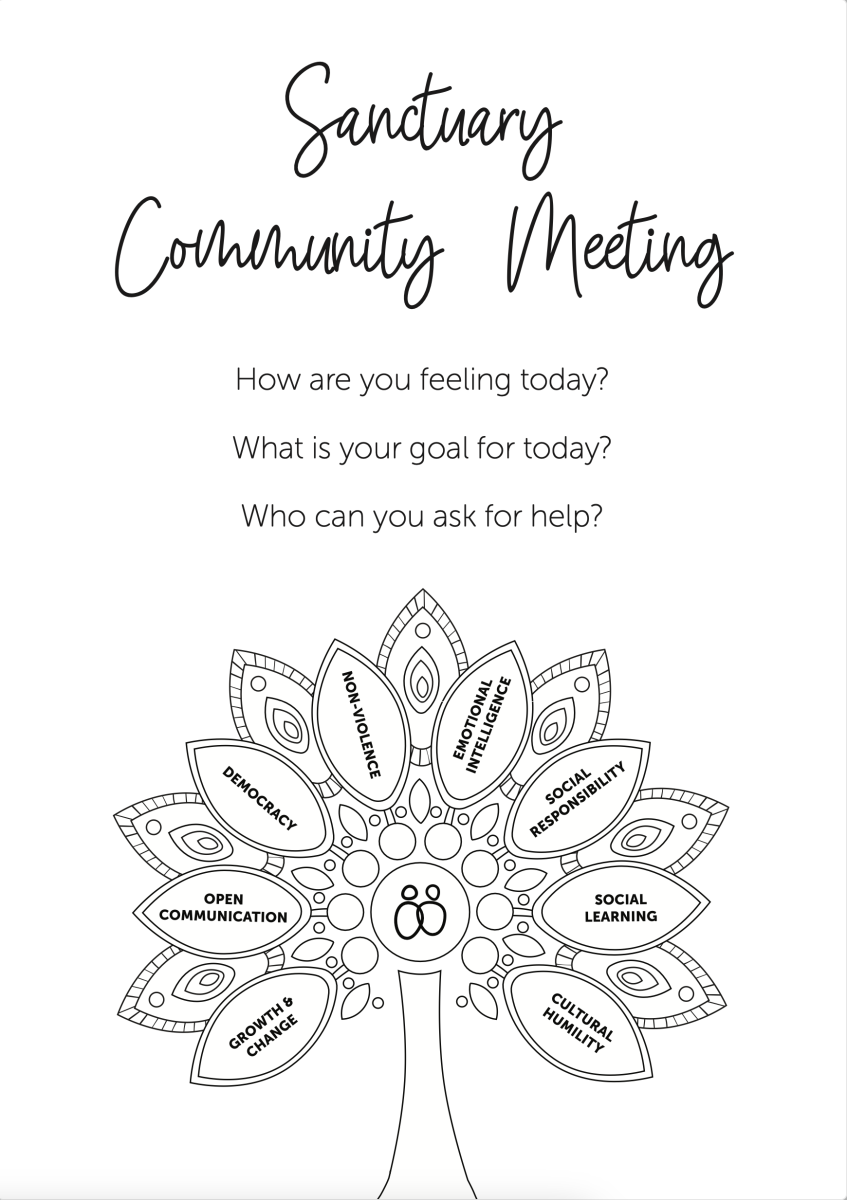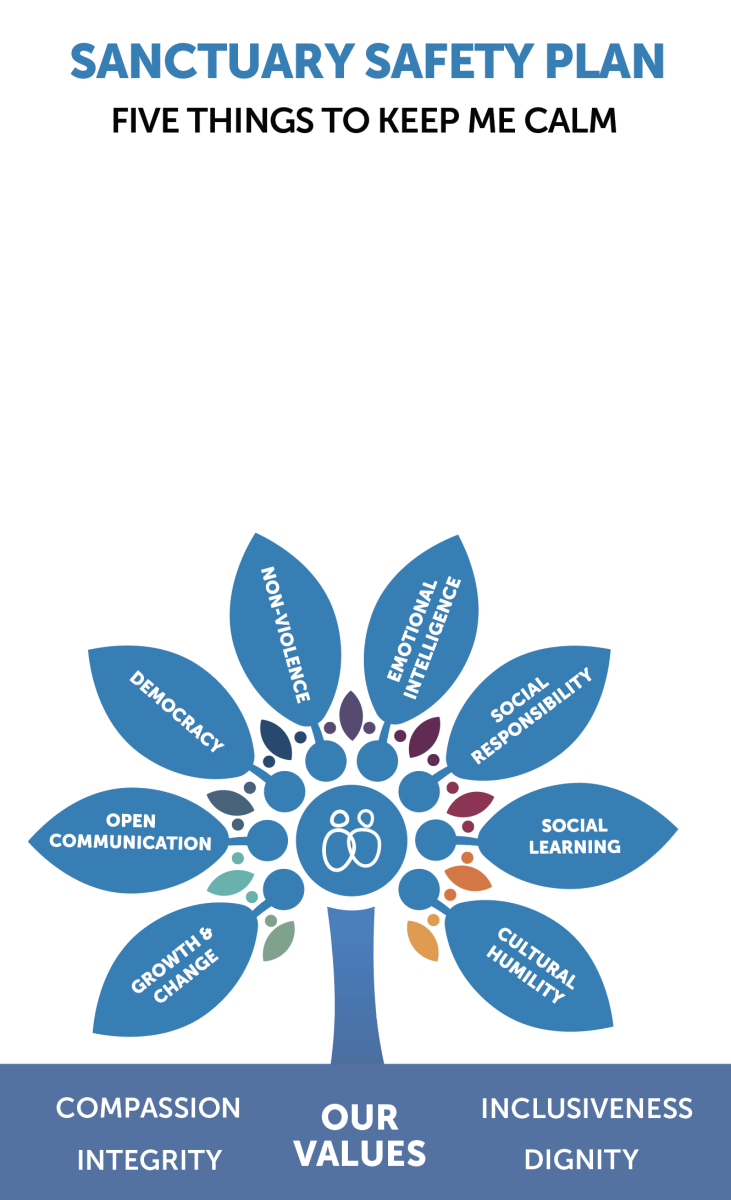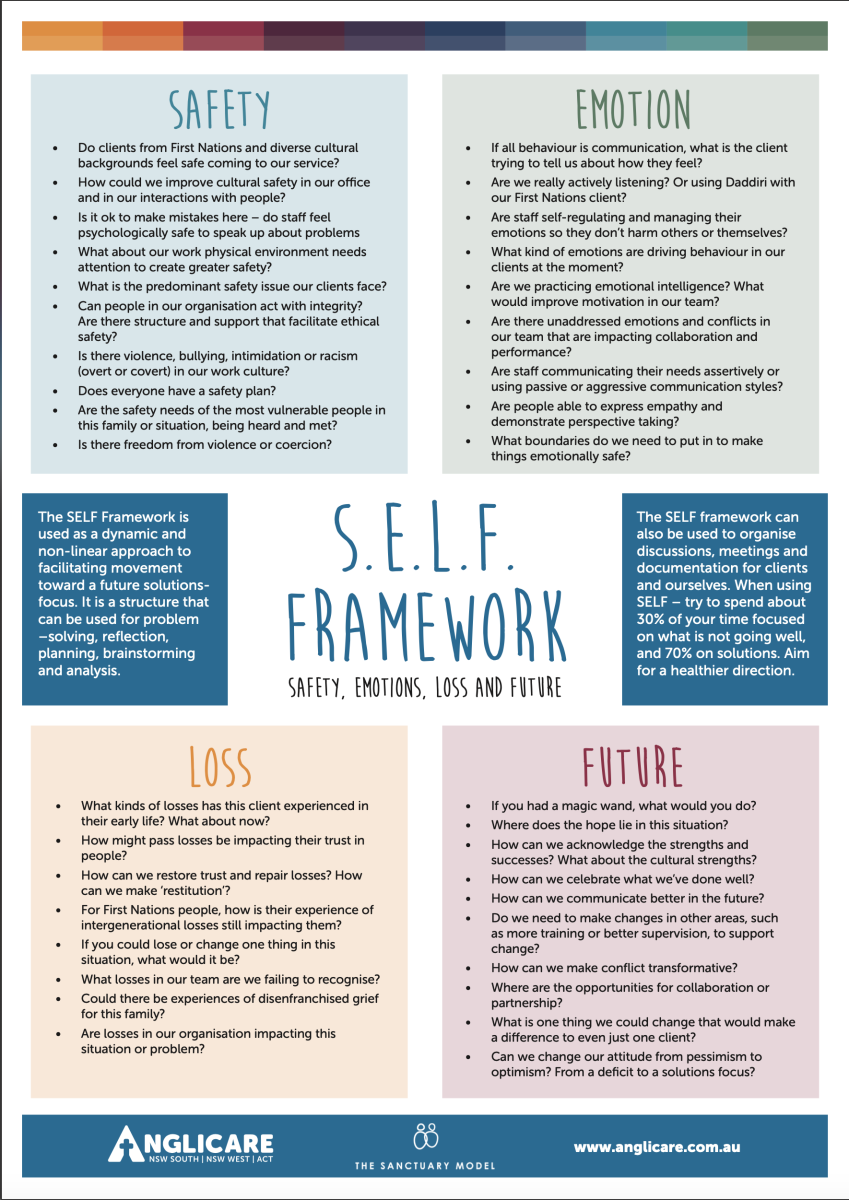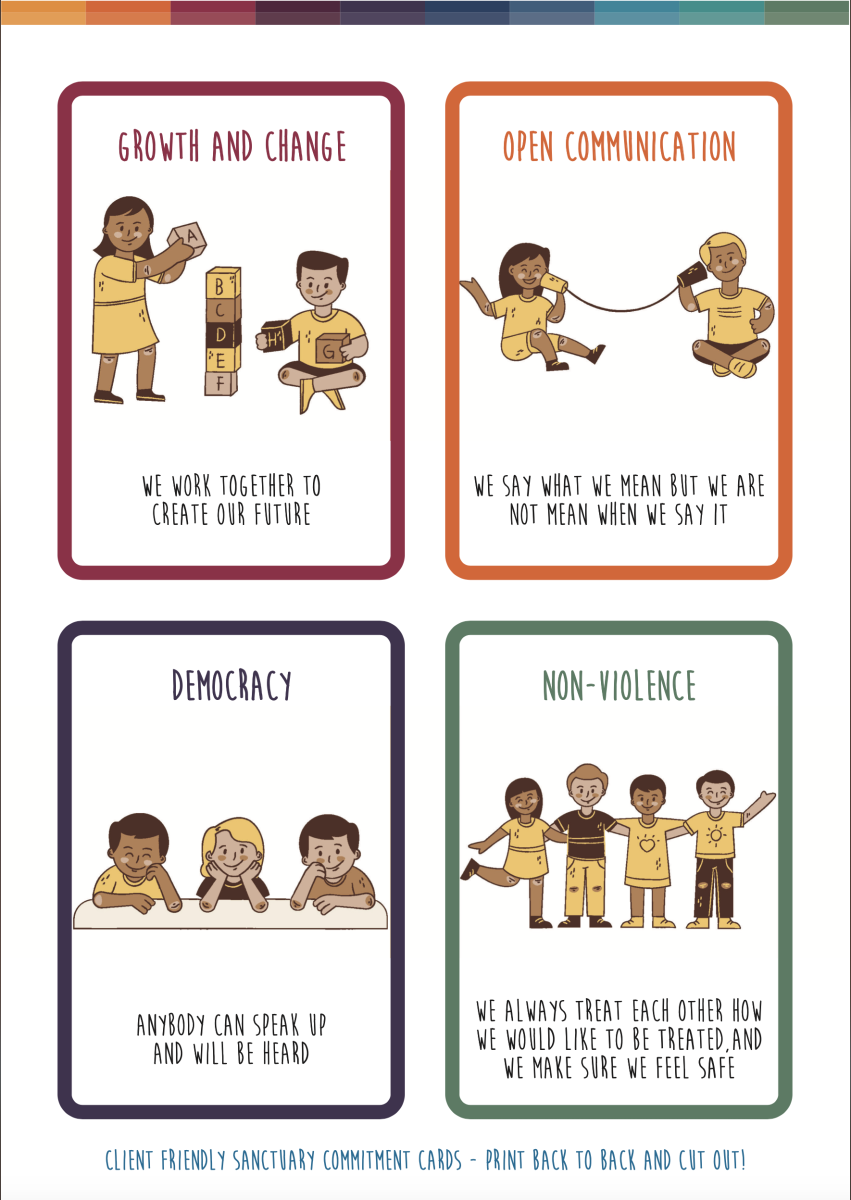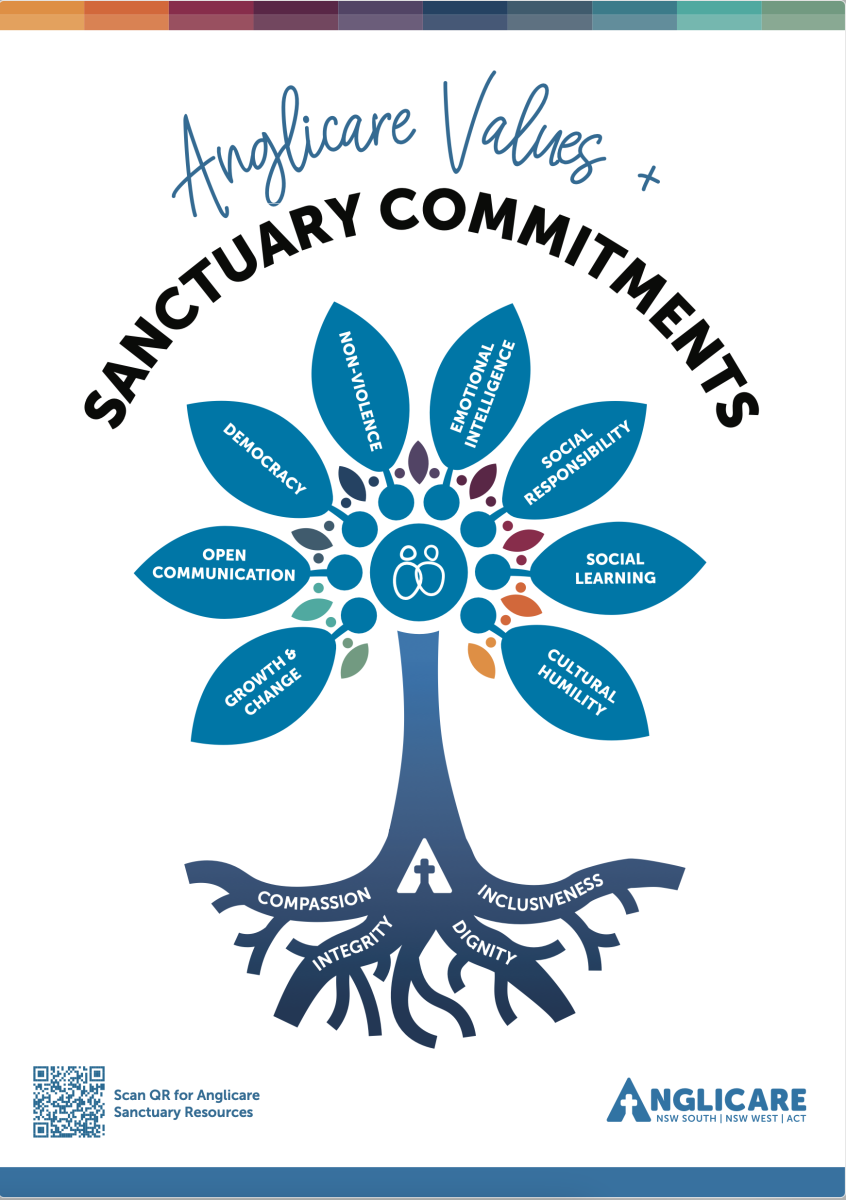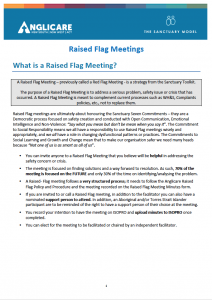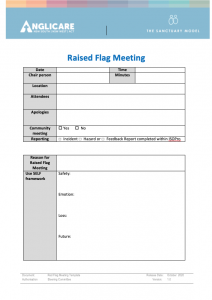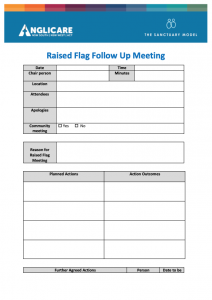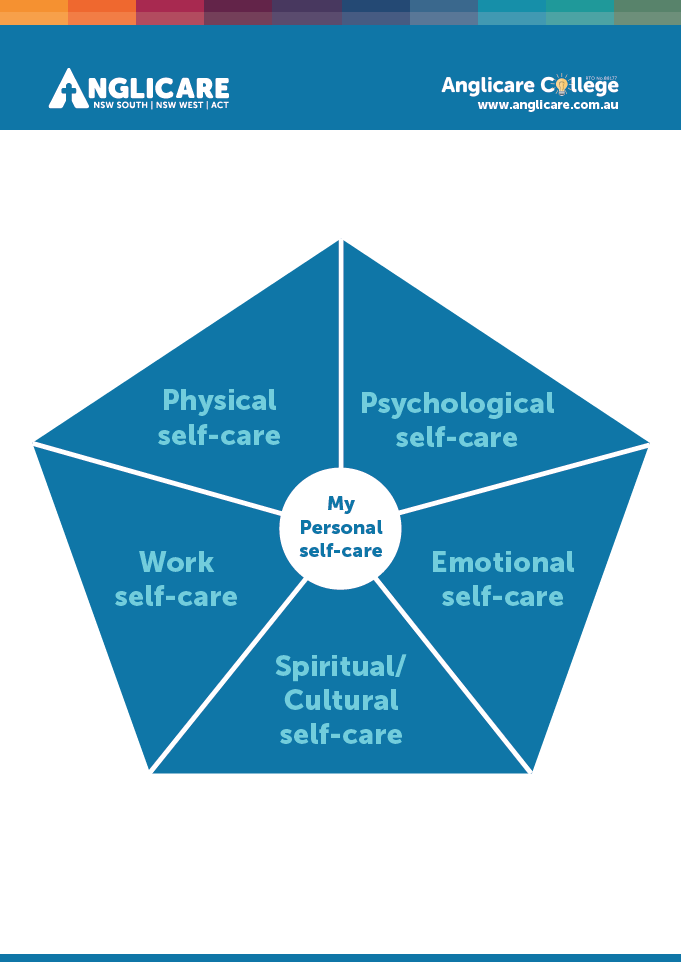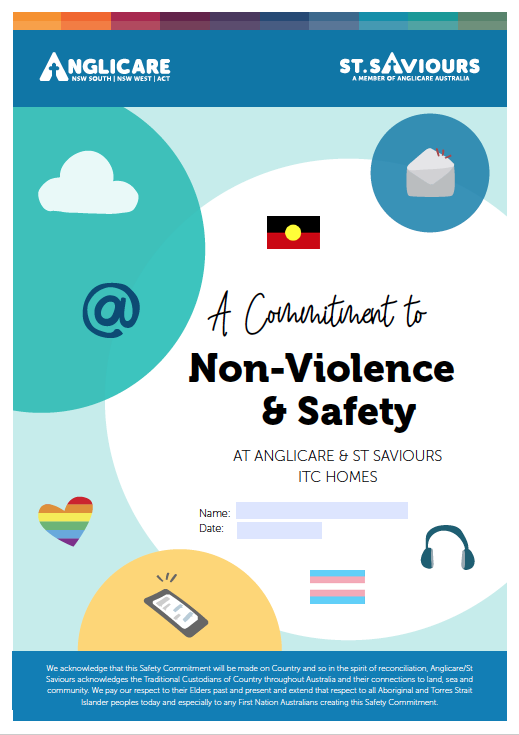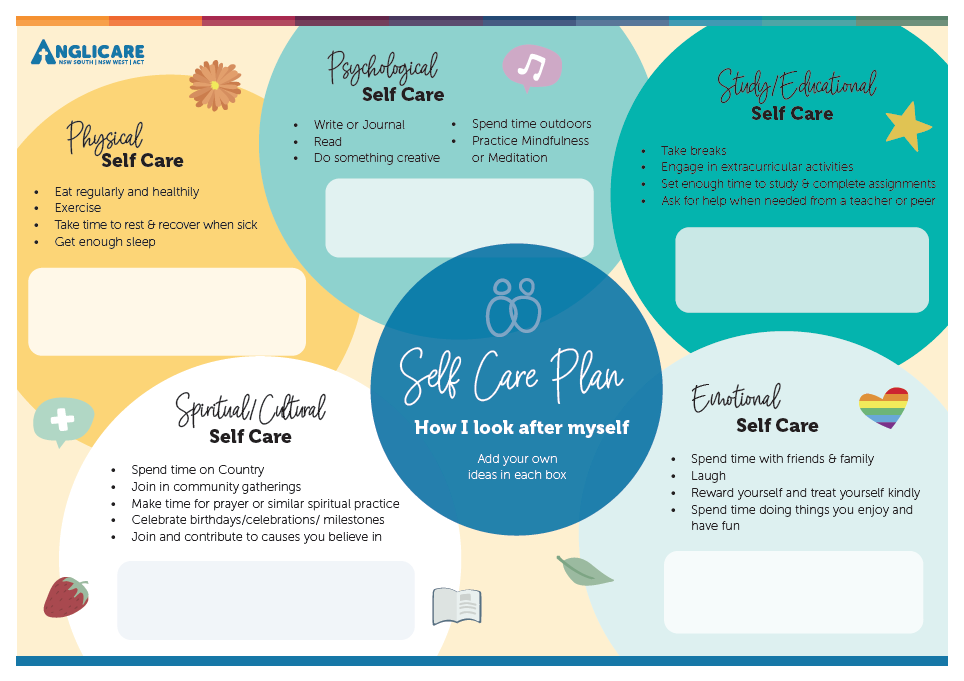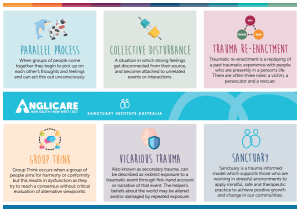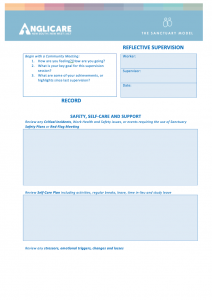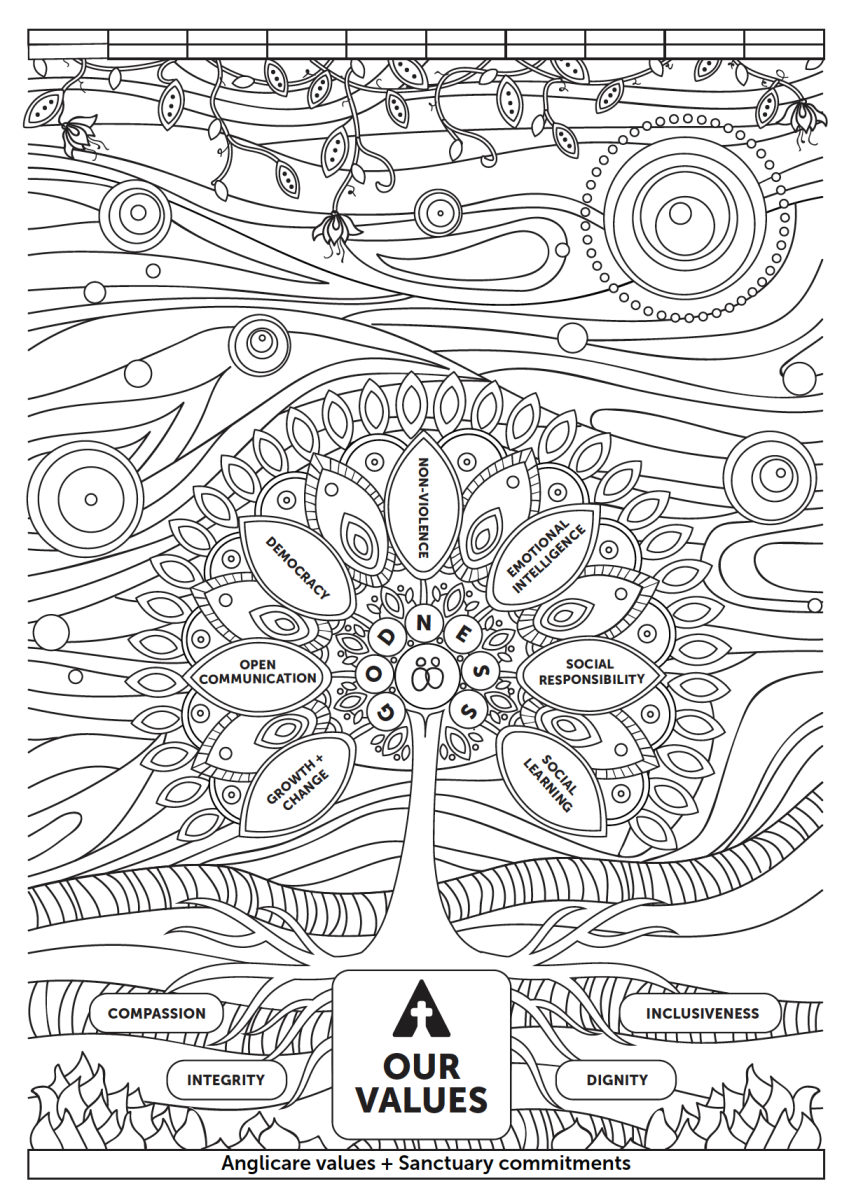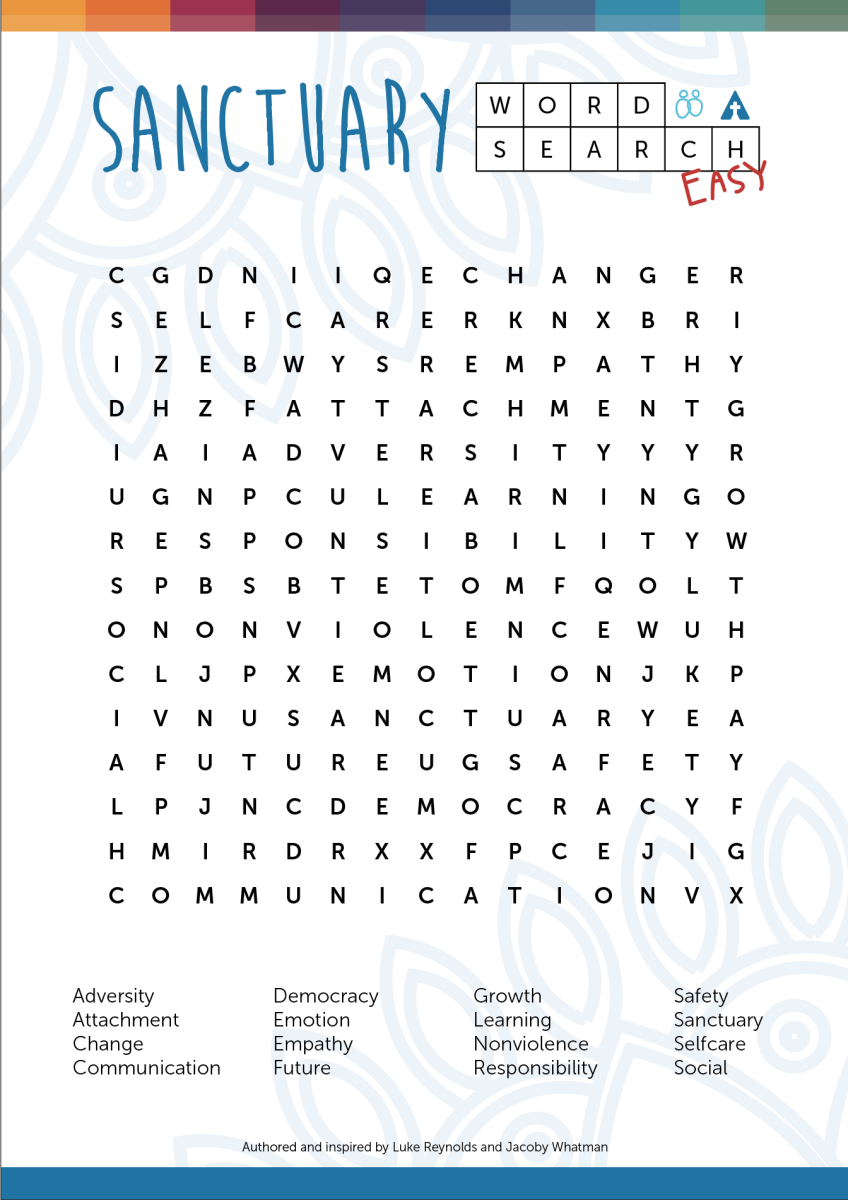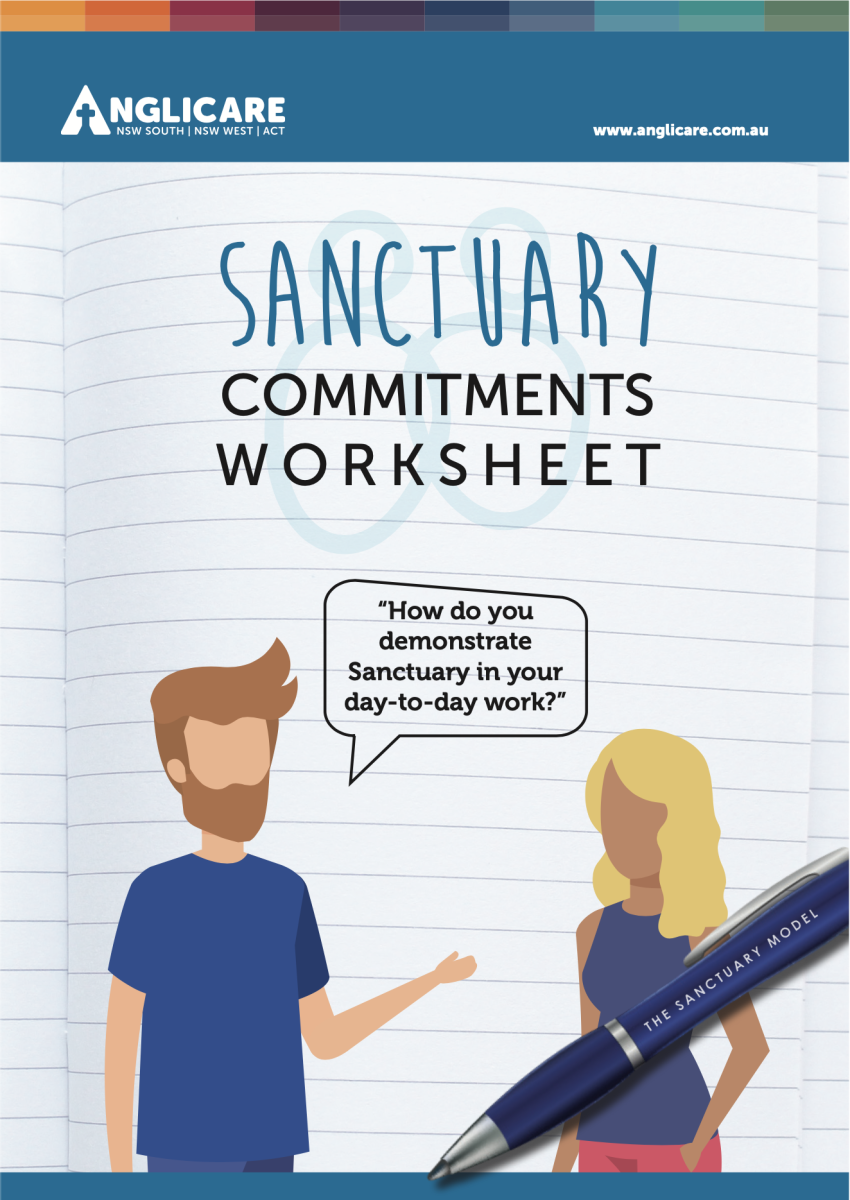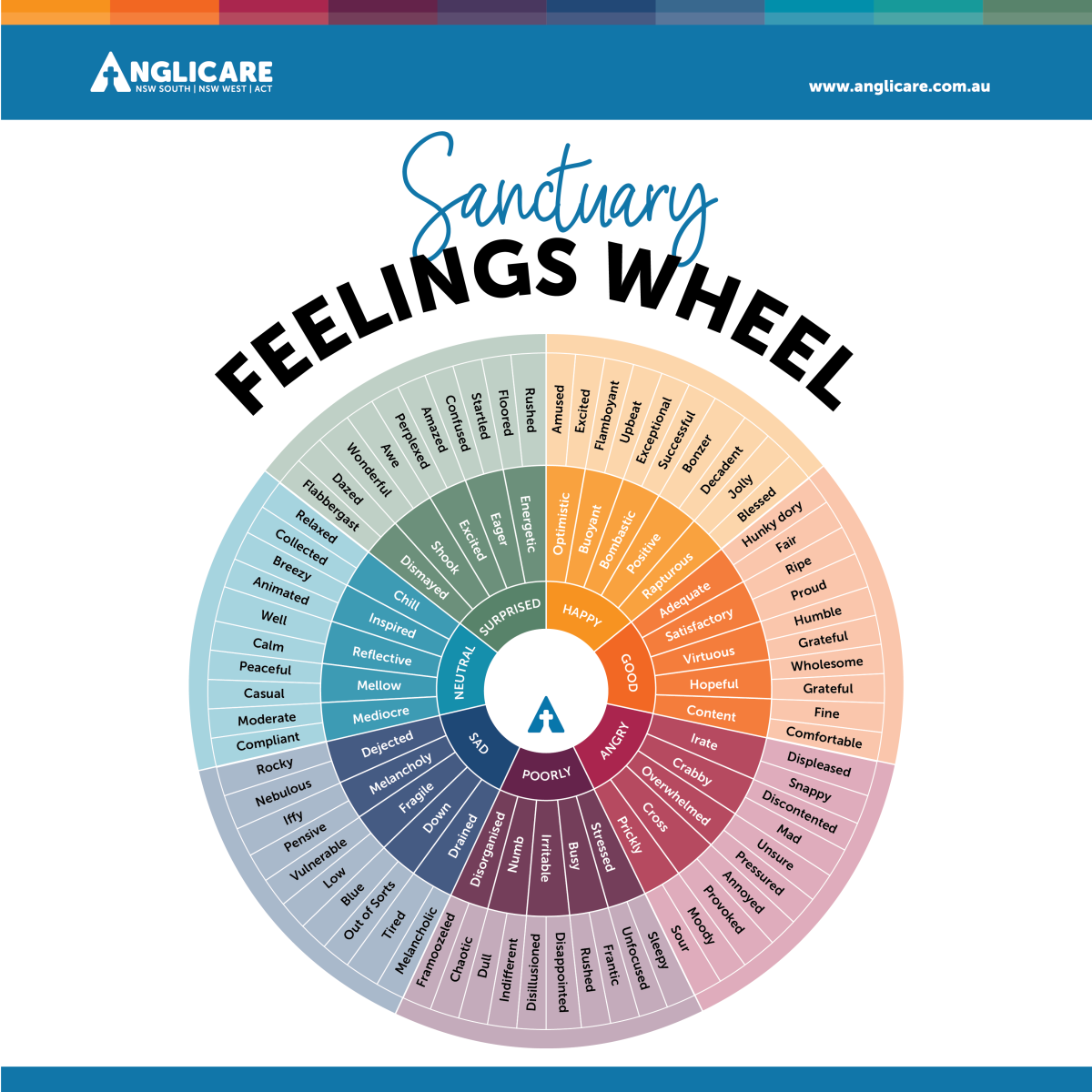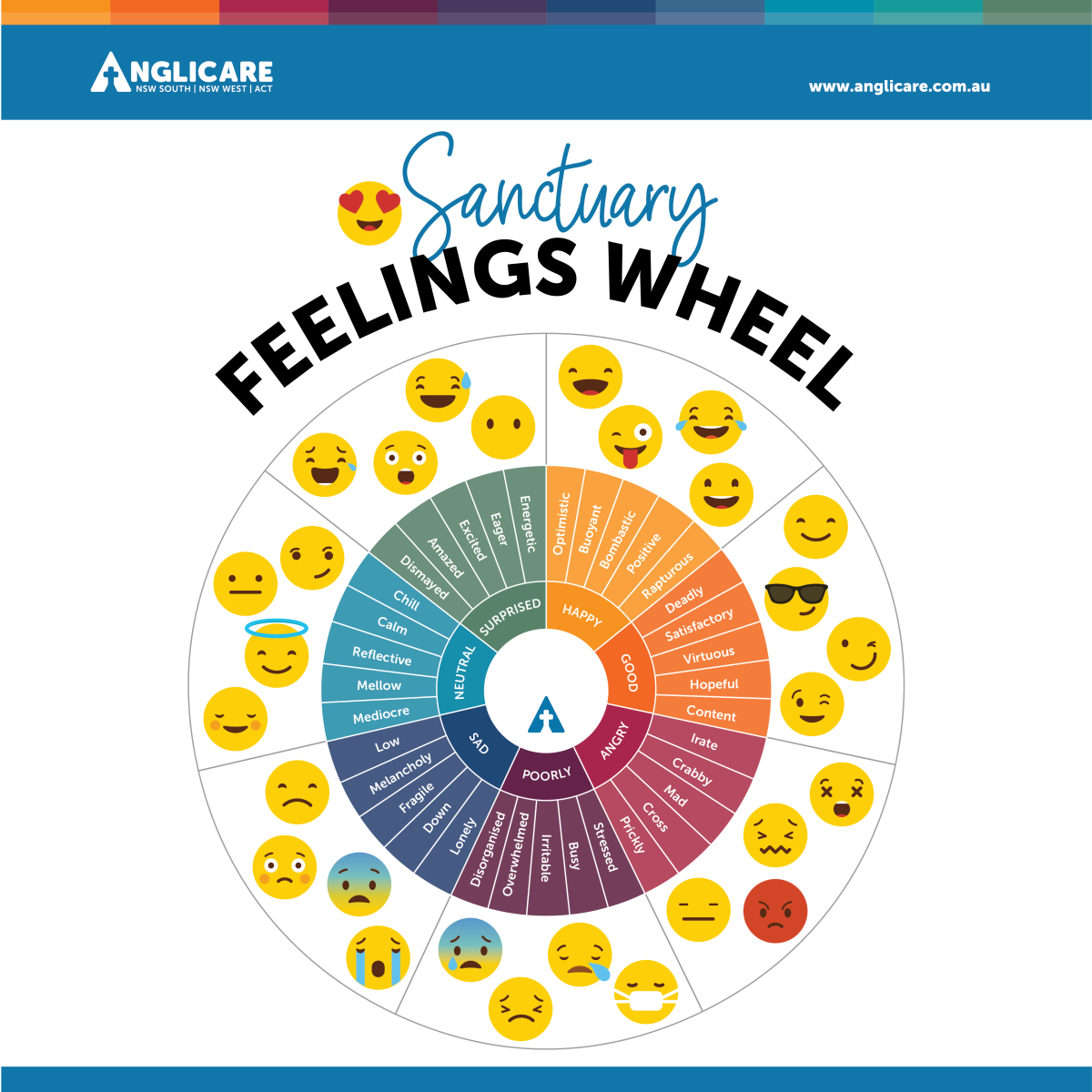
ABOUT US
Sanctuary
The Sanctuary Model is an evidence-
supported care model that supports
everyone in our Anglicare Community
WHAT IS SANCTUARY?
The Sanctuary Model is an evidence-supported care model that supports people who work in stressful human services and care delivery environment. The Model supports staff to provide mindful, safe and therapeutic practice in order to achieve positive growth and change for everyone in our Anglicare community. Sanctuary is an ‘everybody model’: it benefits staff and clients alike by supporting the development of coping skills and resilience, in the face of stress and adversity. Sanctuary encourages connectedness and inclusiveness by acknowledging our past, working from the present and guiding our future. The Sanctuary Model embeds trauma-informed responses into the heart of our practice; it facilitates a shared understanding through a common language in a democratic way.
The Sanctuary Model® represents a theory-based, trauma-informed, trauma-responsive, evidence-supported, and whole of culture approach. It has a clear and structured methodology for building a safe organisational culture. The model is a set of interactive tools that assist people to work together, use a common language and to act in ways that support traumatised clients to heal. At an organisational level it facilitates the development of structures, processes and behaviours on the part of staff and clients that will counteract the impacts of traumatic and adverse experiences.
The Sanctuary Model focuses on safety; and implementation focuses on how to create a safe, non-violent environment that teaches people to cope effectively with stress and adversity and to heal from trauma. The model is focused on implementing the ‘Seven commitments’: Non-violence, Emotional Intelligence, Social Learning, Democracy, Open Communication, Social Responsibility, and Growth and Change. It also features a trauma-informed problem-solving framework represented by the acronym S.E.L.F (Safety, Emotions, Loss and Future) and a set of practical tools (called the Sanctuary Tool Kit) to improve communication, team work, learning, conflict resolution, safety (for staff and clients) and self-care.
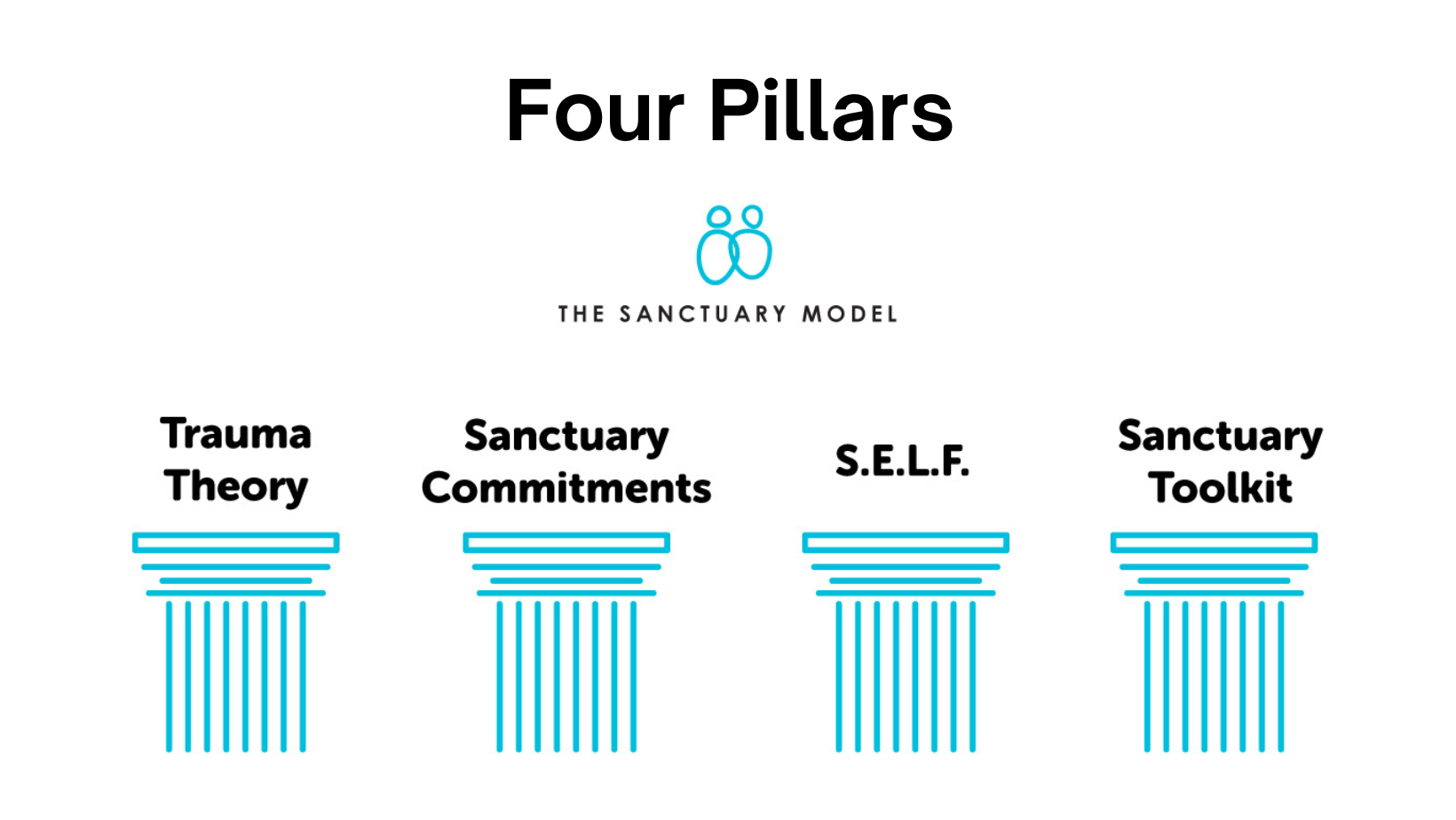
SANCTUARY INFO SHEETS
SANCTUARY VIDEOS
COMMON QUESTIONS
Some of the benefits experienced by organisations who have achieved Certification in the Sanctuary Model include:
- Improved sense of safety; decreased staff and client injury and reduction in escalated critical incidents (physical and emotional);
- Creation of environments where staff feel valued, teams trust one another and clients feel safe and supported to heal;
- Increased staff satisfaction and innovative problem-solving;
- Decreased staff turn-over and increased morale;
- More honest, effective and open communication and good (complex) decision making.
All staff will receive training in the model, through Sanctuary Model online learning and workshops. For more information about the model please see:
www.mackillop.org.au/sanctuary
The Sanctuary Core Team has been appointed by the Steering Committee as the leadership team who are responsible for guiding the implementation of the Sanctuary Model across Anglicare. The Core Team members were chosen (through an organisation-wide Expression of Interest) to be representative of the whole organisation and so encompass all levels, roles and services in Anglicare. They provide important feedback from the organisation to ensure ‘every voice is heard’ in the change process. Consequently the Core Team is multi-disciplinary, multi-level and diverse.
ACT/Queanbeyan
- Alyce Hawkins
- Margaret Hennessy
- Rebecca Burgess
- Sandra Michie
- Shyanne Watson
- Kiara Soares
Liverpool
- Andrew Bromley
- Rebekah Cogger
- Cameron Moshref
Goulburn
- Toni Reay
- Kira Moorby
- David Dahl
Riverina
- Susan Colley – Core Team Chair
- Dr Serena Mathews – (Out going chair)
- Emily Dawson
South Coast
- Kaitlyn Gosling
For Anglicare to get the most value out of adopting the Sanctuary Model, Core Team has proposed the development of Local Implementation Teams. The Local Implementation Teams will work with Core Team Members to ensure the principles of the Sanctuary Model fits with and is responsive to nuances of local service delivery. The role of Local Implementation Team Representatives is to be:
- Involved in integrating the Sanctuary Commitments and Toolkit into day-to-day operations;
- Involved with identifying strengths, vulnerabilities and major conflicts in the region/program;
- Role modelling Sanctuary Commitments, educating staff in the 4 Pillars and developing resources for use at a local level
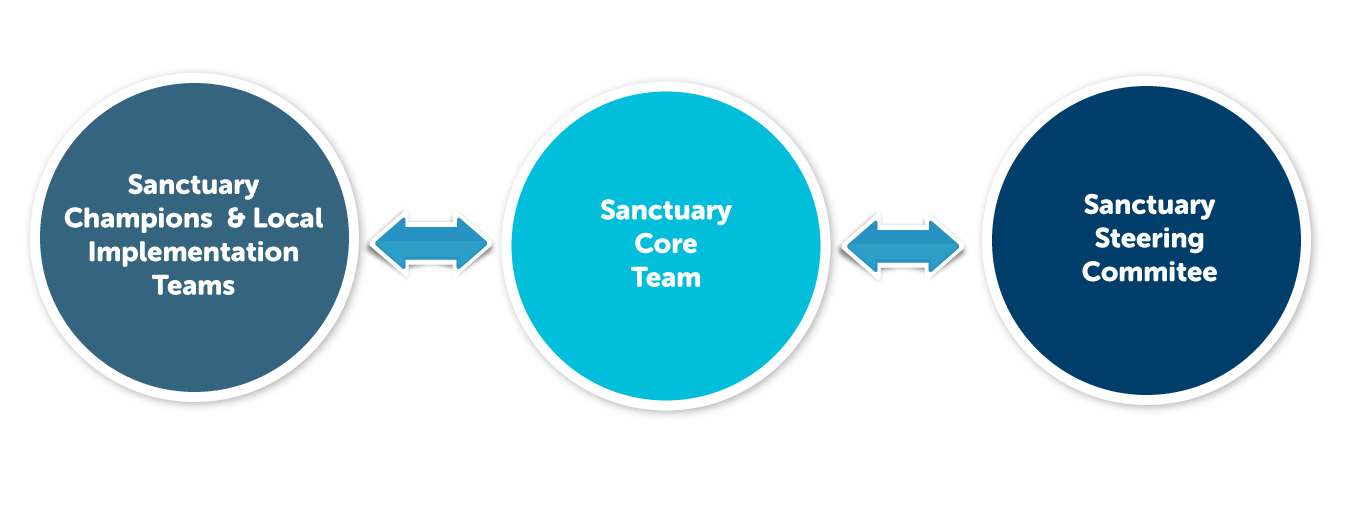
A Community Meeting is part of the Sanctuary Tool Kit that reflects the 7 Commitments (Non-violence, Emotional Intelligence, Open Communication, Democracy, Social Learning, Social Responsibility, and Growth & Change). The community meeting is mean to move quickly. It is not a therapy session. They are done to begin and to ‘close’ the day. Recognising feelings, sharing goals and understanding workload pressures on others, helps to create stronger, supportive and more cohesive teams.
No. The Pillars in the Sanctuary Model intersect with Anglicare Values; they are complimentary and connect in multiple ways. The Mission and Community Engagement Team has developed a pictorial representation, to demonstrate how Anglicare Values support and provide a foundation for the introduction of the Sanctuary Model. Anglicare Values will support the model to ‘grow’ across our services and become embedded in our practice, through the implementation and Certification process.
PRINT RESOURCES
HAVE YOUR SAY
Have some feedback or a question about Sanctuary? Complete the form below to send a message to our team.
